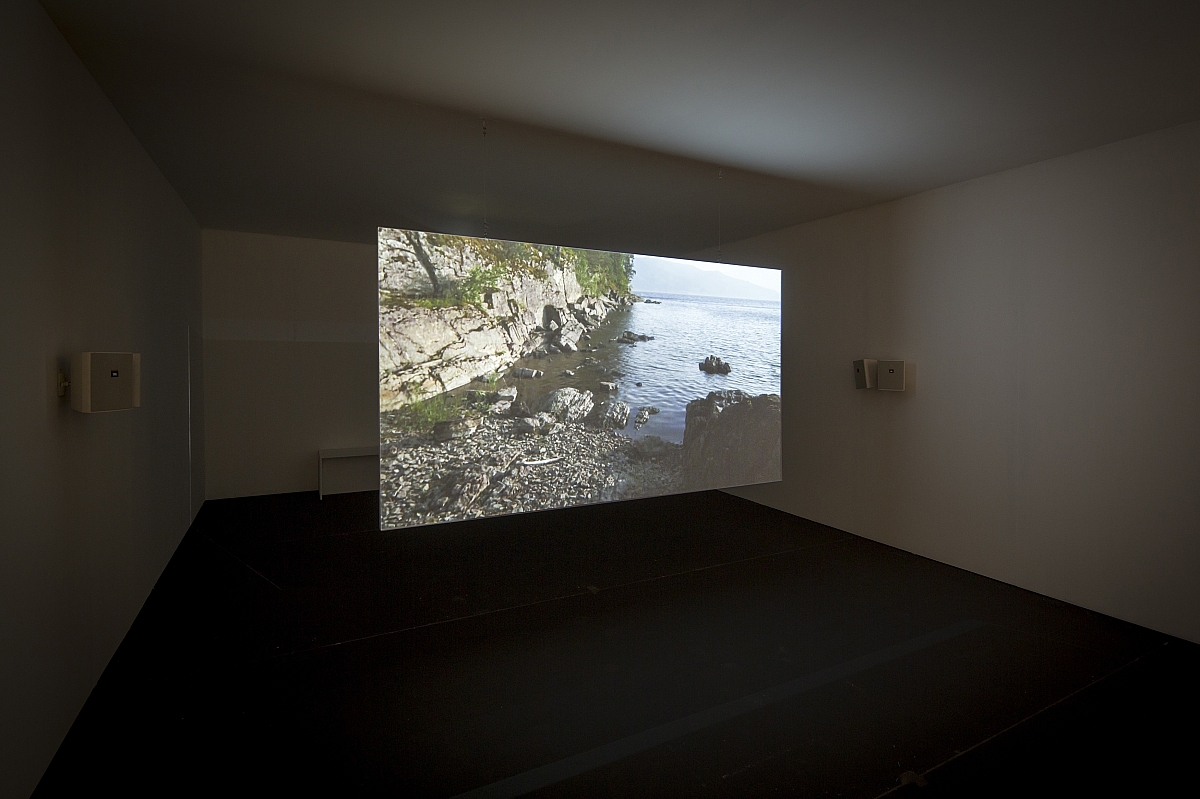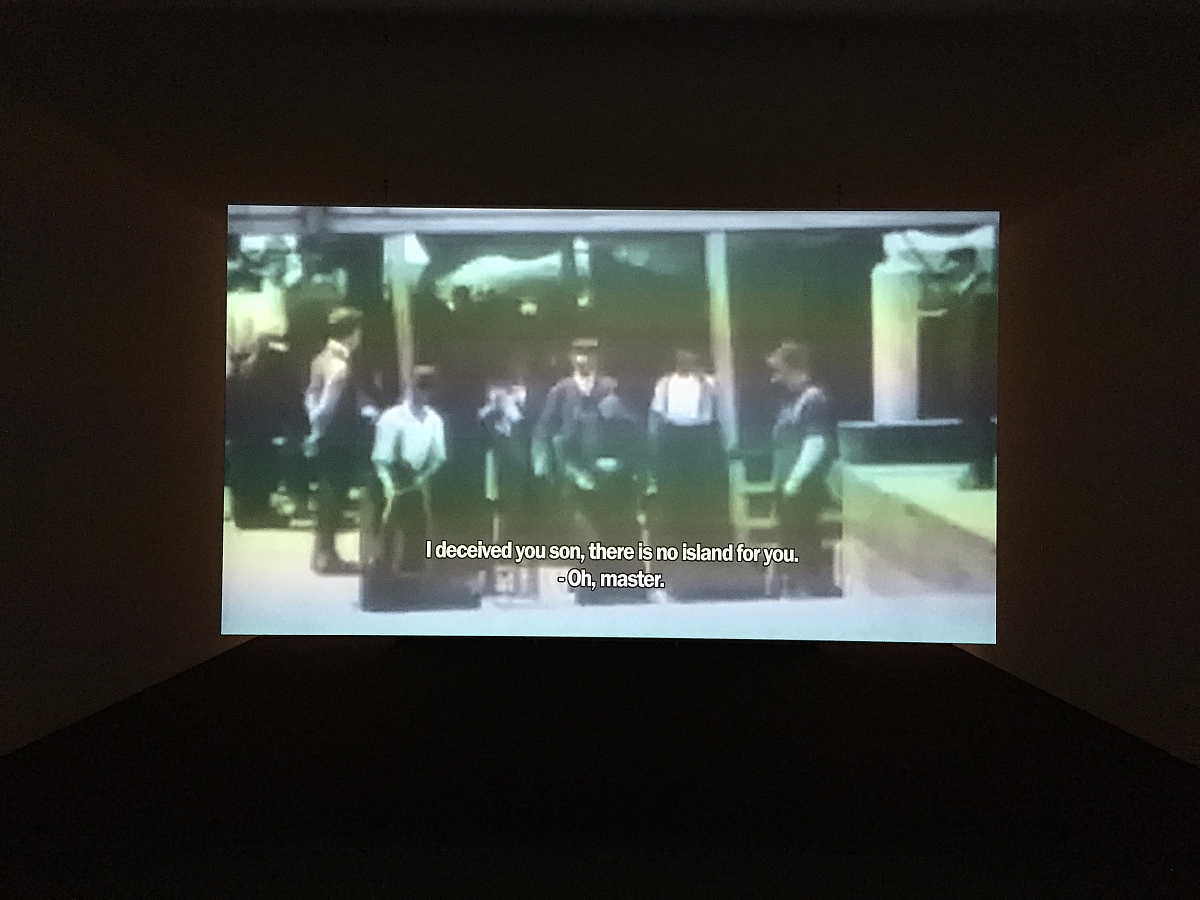






The Shores of an Island I Only Skirted employs a single screen, on each side of which a different video is projected. The video that one saw on first entering the space was shot on Utøya. Fourteen minutes long, it is devoid of any human activity. The camera calmly records the island’s natural environment: the rustling of leaves, the waving of grass, the splashing of small waves onto a stony beach. Only in a few shots showing the whole island from a distance, shrouded in a thick fog, might one recognize it as the place of unprecedented tragedy, a place infected by its past, a “guilty landscape,” to borrow a phrase from the Dutch artist Armando. On the other side of the screen, the imagery is fragmented and the resolution low. Most shots are brief, restless, enigmatic; they seem to have been taken from boats or with an underwater camera. All were found on the Internet. They were shot at different times and places, yet there is a common theme: immigration. The video montage, fourteen minutes long as well, includes, for example, some black-and-white footage of what seems to be an arrival at Ellis Island; an image of refugees hiding in the false ceiling of a cargo space; and – most poignant of all – fragments of a video in which a small boat packed with desperate Africans reaches the shore of a light-splashed beach crowded with European sunbathers.
While the theme of immigrations form an obvious link between the two sets of images – the murderer on Utøya was motivated by his hatred of immigrants – the sound track also plays an essential connecting role. Composed of both self-recorded sounds and found material including quotes from, among others, G. W. Pabst’s 1933 film Don Quixote and a lecture by philosopher Herbert Marcuse, all seemingly selected as randomly as the images pulled from the Internet, the audio does not obviously relate to the images. Yet its simultaneous presence in both videos creates ironic and poignant combinations: For instance, Quixote’s naive companion Sancho Panza wishes for an island “with plenty of good wine” and “plenty of water around it, to keep out the soldiers and thieves alike” just as one sees Utøya in the fog; joyful drums accompany view of both the clubhouse on Utøya and a boatful of immigrants floating on a vast, open sea. This ambiguous interaction between sound and image underlines the dichotomy in our view of the island: It was once a kind of utopia, a place of refuge; after the massacre, it is regarded as a place of horror. Perhaps something similar can be said of Europe itself. [Saskia van der Kroef, Artforum February 2013]